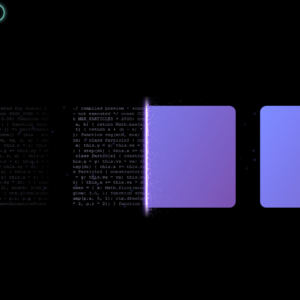JavaScript strings are a fundamental aspect of web development, enabling the manipulation of text in various ways. Whether you’re dealing with basic string concatenation or more advanced operations like finding and replacing substrings, mastering these techniques can greatly enhance your coding efficiency. In this article, we’ll explore various string operations, providing clear examples to help you understand each concept.
Basic Info and String Concatenation
String concatenation is the process of combining two or more strings into one. This can be done using the + operator or template literals in ES6.
let firstName = "Sunny";
let lastName = "Ray";
// Using the + operator
let fullName = firstName + " " + lastName;
console.log(fullName); // Output: Sunny Ray
// Using template literals
let fullNameTemplate = `${firstName} ${lastName}`;
console.log(fullNameTemplate); // Output: Sunny Ray
Reverse String
Reversing a string is a common task that can be done by converting the string into an array, reversing the array, and then joining it back into a string.
let str = "Hello, World!";
let reversedStr = str.split('').reverse().join('');
console.log(reversedStr); // Output: !dlroW ,olleH
Comparing Strings Lexicographically
Lexicographical comparison compares strings based on the Unicode value of each character. JavaScript uses the localeCompare() method or the > and < operators for this purpose.
let str1 = "apple";
let str2 = "banana";
console.log(str1.localeCompare(str2)); // Output: -1 (str1 comes before str2)
console.log(str1 > str2); // Output: false
console.log(str1 < str2); // Output: true
Access Character at Index in String
In JavaScript, you can access a character in a string using bracket notation or the charAt() method
let str = "JavaScript";
console.log(str[0]); // Output: J
console.log(str.charAt(0)); // Output: J
Escaping Quotes
When working with strings, you might need to include quotes inside the string itself. JavaScript allows you to escape quotes using a backslash (\).
let str = "He said, \"JavaScript is awesome!\"";
console.log(str); // Output: He said, "JavaScript is awesome!"
Word Counter
A simple word counter can be implemented by splitting a string into an array of words and counting the length of the array.
let sentence = "Count the number of words in this sentence.";
let wordCount = sentence.split(' ').length;
console.log(wordCount); // Output: 7
Trim Whitespace
The trim() method is used to remove whitespace from both ends of a string.
let str = " Hello, World! ";
let trimmedStr = str.trim();
console.log(trimmedStr); // Output: Hello, World!
Splitting a String into an Array
The split() method splits a string into an array based on a specified delimiter.
let str = "apple,banana,orange";
let fruitArray = str.split(',');
console.log(fruitArray); // Output: ["apple", "banana", "orange"]
Strings are Unicode
JavaScript strings are encoded in UTF-16, meaning they support Unicode characters. This allows you to work with characters from different languages and symbols.
let smiley = "😊";
console.log(smiley.length); // Output: 2 (UTF-16 encoding)
Detecting a String
To check if a variable is a string, you can use the typeof operator or instanceof.
let str = "Hello";
console.log(typeof str === 'string'); // Output: true
console.log(str instanceof String); // Output: false (primitive string)
Substrings with Slice
The slice() method extracts a section of a string and returns it as a new string.
let str = "JavaScript";
let subStr = str.slice(0, 4);
console.log(subStr); // Output: Java
Character Code
You can get the Unicode value of a character using the charCodeAt() method.
let char = 'A';
let code = char.charCodeAt(0);
console.log(code); // Output: 65
String Representations of Numbers
JavaScript allows you to convert numbers to strings using the toString() method or string literals.
let num = 123;
let strNum = num.toString();
console.log(strNum); // Output: "123"
String Find and Replace Functions
The replace() method is used to find and replace text within a string. You can replace the first occurrence or all occurrences using a regular expression.
let str = "Hello, World!";
let newStr = str.replace("World", "JavaScript");
console.log(newStr); // Output: Hello, JavaScript!
Find the Index of a Substring Inside a String
The indexOf() method returns the index of the first occurrence of a specified substring.
let str = "JavaScript is great!";
let index = str.indexOf("great");
console.log(index); // Output: 14
String to Upper Case
To convert a string to uppercase, use the toUpperCase() method.
let str = "hello";
let upperStr = str.toUpperCase();
console.log(upperStr); // Output: HELLO
String to Lower Case
Similarly, the toLowerCase() method converts a string to lowercase.
let str = "HELLO";
let lowerStr = str.toLowerCase();
console.log(lowerStr); // Output: hello
Repeat a String
The repeat() method repeats a string a specified number of times.
let str = "Repeat ";
let repeatedStr = str.repeat(3);
console.log(repeatedStr); // Output: Repeat Repeat Repeat
Conclusion
Mastering string manipulation in JavaScript can greatly enhance your ability to process and manipulate text efficiently. From basic concatenation to advanced operations like finding and replacing substrings, these techniques are essential for any JavaScript developer. By understanding and practicing these concepts, you’ll be well-equipped to handle a wide range of string-related tasks in your projects.
To learn about most popular JavaScript framework that is React JS click on the link here – Learn React JS step by step








1 Comment